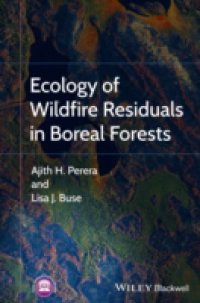Large and intense wildfires are integral to the globally important boreal forest biome. While much is known about boreal wildfires, the focus on forest remnants that either escape or survive these intense fires is a recent phenomenon: academics now study ecological processes of wildfire residuals, forest policymakers use their patterns to design harvest strategies, forest managers consider their economic value, and conservationists recognize their intrinsic ecological importance. Ecology of Wildfire Residuals in Boreal Forests is the first book to explore ecological patterns and processes of what does not burn within boreal wildfires. Following a brief introduction to the boreal forest biome, it discusses the processes that form wildfire residuals; how they are studied, with various approaches and methods; the types, extent, and ecological functions of wildfire residuals; and their role in forest management applications, all in the context of ecological scale. This book is a reference for researchers and graduate students studying boreal forest ecology, as well as for policymakers and forest managers. It adopts a non-reductionist perspective that will be of interest to scientists from conservation science, forest ecology, forest management, and timber production. Brings together fire behaviour, ecological scale, vegetation ecology, and conservation biology to provide a cross disciplinary, multi-scale, and an integrative discussion of forest fire residuals Captures the state of knowledge with a meta-analysis of research trends during the past few decades, with a comprehensive review of the literature, a compilation of key references, and a list of key topics relevant to the study of boreal wildfire residuals Identifies the major gaps and uncertainties in the present body of knowledge, including a critique of study techniques and reporting practices to date, and proposes a set of terms and definitions and a list of research questions and priorities Includes the authors observations and research experience from boreal Canada, and information extracted from interactions with North American and European ecologists, forest managers, and conservationists

